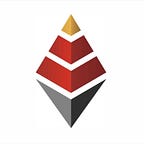Red: A Full-Stack Language Created for Smart Contract and Application Development
It is necessary to master multiple Internet technologies and programming languages for developing modern software projects. Take a website for example. It requires the use of back-end development, front-end development, interface design, product design, database, various mobile clients, three-screen compatibility, restFul API design and OAuth etc. Some avant-garde projects may also entail the use of technologies such as Single Page Application, Web Socket and HTML5/CSS3. Thus, a software development project is a highly complex deed.
If a person can master all these skills and understand many languages, he/she is a so-called full-stack engineer. However, in reality, it is highly difficult for a full-stack engineer to be really proficient in everything. For a project, a full-stack engineer may be able to cover everything. However, in terms of a company’s architecture, real full-stack can hardly be realized.
Moreover, the complexity of project development has always plagued various companies, so that a company has to hire different engineers for each job, possibly a UI engineer or PHP development engineer.
So, can we change our way of thinking to solve the current problem? If there is a language tool that can do front-end, back-end, webpage end, mobile end and even embedded end, instead of relying on persons or a full-stack engineer for operation, will everything become simpler?
Red is rightly such a full-stack language, created for smart contract and application development. The so-called smart contract means a set of commitments defined in digital form, including the agreement on which the contractual parties can implement those commitments, and Red is the language tool for writing this set of digital models so that the code is not modified or deleted.
Here is a simple example. In the past, if you lent some money, the borrower usually resorted to an IOU to govern and supervise the contract, and whether the borrower could repay the money within the stipulated time, you were not in complete control. If it was overdue, the borrower did not repay even when there was money at the borrower’s account, there was no way for you, personally, to supervise and know that.
By contrast, the means of smart contract can place the borrower’s entire account under a distributed digitalized supervision before and after the borrower borrows the money; when there is enough money at his account, the money will be invisibly “controlled and frozen”, since there is an outstanding loan for him. Therefore, for the lender, the timely repayment and loan risk of his money can be totally guaranteed.
That is the smart contract capacity of Red. Once mastering the Red language, every engineer can program smart contracts under any scenario so as to guarantee no loss of corporate or individual benefits. Moreover, as a full-stack language, Red has been learned and used by almost ten thousand engineers, who apply Red to realize complex projects. To put it simply, an average engineer can finish the development of an Internet software project, including front-end, back-end, mobile end, webpage end and MacOS and Windows platforms.
Well, where does Red come from?
The Red project was officially launched in March 2011, with the first public announcement and the releases of the version 0.1.0, which was development in 3 months. That early version provided a fully working Red/System toolchain, with a compiler and linker, all in 60KB of source code. That’s a very light installation package.
In the following years, more and more contributors joined the Red Community and increasing new features, such as ARM support, floating point support and Parse dialect, extending the scope. In 2013, the founder of Red project obtained investment from Kaifu Lee’s Sinovation Ventures and moved the project to Beijing in 2014. In the same year, the milestone of Red 1.0 arrived soon.
A new roadmap was then set for Red, and the founder included GUI (graphical user interface) modules into it, focusing on Android GUI support in 2016.
So far, Red can be used at MacOS, Android and Windows, and more and more engineers start using the Red programming language.
For better promoting and developing the Red Community economy, Red is about to offer the RED Token.
For more information, please visit⤵
Website:https://ico.red-lang.org/
Twitter:https://twitter.com/realRedToken
Facebook:https://www.facebook.com/redprogramminglanguage
Telegram:t.me/redofficial
Whitepaper:https://ico.red-lang.org/RED-whitepaper.pdf
